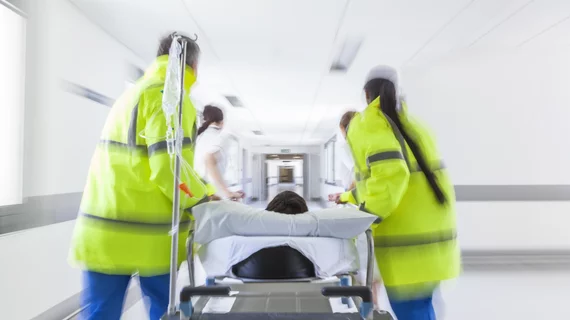Predicting healthcare utilization in COPD patients using CT and machine learning
Combining CT lung measurements with machine learning models to predict prognosis in COPD patients could help to lessen their reliance on emergency services.
“Predicting increased risk of future healthcare utilization in chronic obstructive pulmonary disease(COPD) patients is an important goal for improving patient management,” experts of a study published recently in Academic Radiology explained.
This goal has been the focus of many research investigations, as a COPD diagnosis carries with it high utilization of healthcare services and even higher mortality rates.
For the study, experts hypothesized that a machine learning approach that accounts for demographic data, results from pulmonary function tests and measurements obtained via CT lung scans could indicate how much COPD patients would need to rely on emergency services or hospitalizations due to respiratory issues in the future.
With a goal of achieving 80% prediction accuracy, researchers applied their approach to the cases of 527 COPD participants from a Canadian study of obstructive lung disease that was conducted between 2010 and 2017. Participants were questioned about their hospitalizations and emergency room visits. That information was considered alongside 108 CT quantitative emphysema, airway and vascular measurements to predict the patients’ future healthcare utilization.
Follow-up healthcare services were used by 35% of participants. This was found to be independent of age, sex or smoking history, but individuals with lower FEV1% were observed to utilize services more often than their peers. The model that used clinical data, pulmonary function tests and CT measurements was found to be the most accurate in predicting utilization, with an accuracy of 80%.
“We found that adding imaging predictors to conventional measurements resulted in a 15% increase for correct classification,” corresponding author Miranda Kirby, PhD, of the Department of Physics at Toronto Metropolitan University, and co-authors wrote. “Although this increase may seem small, identifying high risk patients could lead to healthcare utilization prevention through earlier treatment initiation or more careful monitoring.”
The authors suggested that even small increases in prediction accuracy could translate into preventing a large number of hospitalizations at the population level.
The full study can be viewed here.
Related COPD content:
Is coronary heart disease on CT associated with early development of COPD?
CT-based radiomics features can help diagnose COPD earlier than ever before
Deep learning models predict COPD survival based on chest radiographs
CT reveals undersized lung airways as ‘major’ COPD risk factor, ‘on par’ with cigarette smoking

